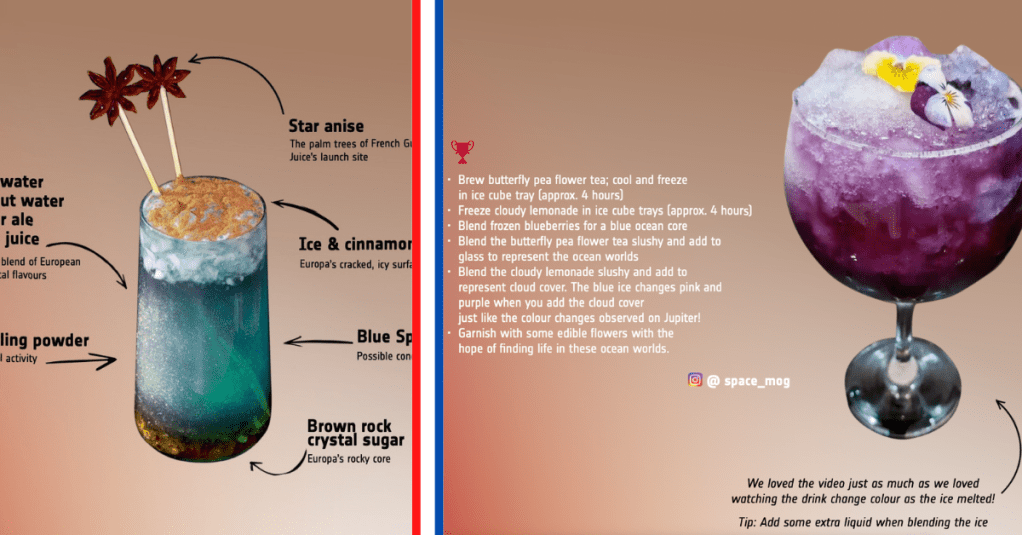On April 14, 2023, the Jupiter Icy Moons Explorer was launched from French Guiana by the European Space Agency (ESA). As its name implies, its mission is to study three of Jupiter’s moons. Ganymede, Callisto, and Europa are believed to have bodies of liquid water hidden under the surfaces of these ice-crusted satellites.
It won’t reach Jupiter until 2031, but in the meantime, there’s a lot of excitement in the scientific community (and among space exploration enthusiasts) around the mission. Somewhere along the way, the Jupiter Icy Moons Explorer picked up the nickname “Juice” and the ESA picked up on that. ESA started #SpaceJuice competition in January 2023, inviting fans to contribute juice mocktail recipes for prizes.
The result was the Space Juice Recipe Book.
Previous Jupiter missions like Voyager 1 and 2, Galileo, and Cassini were only able to photograph the largest moons of Jupiter. The gas giant planet has an estimated 95 moons, the largest of which are Io, Ganymede, Callisto, and Europa, and can be seen from Earth with an unaided eye. They are known as the “Galilean Moons” because they were first observed and recognized as Jupiter’s moons by astronomer Galileo Galilei in the 1600s.
Io is known to have the lowest amount of water of any object in the solar system, but Ganymede, Callisto and Europa are known to have icy crusts. Early photos of the moons taken by NASA spacecraft were only enough to cause suspicion that an ocean might exist on the moons, some of the largest in the Solar System, but they weren’t sure.

By 2014, NASA was certain the oceans were made of salty liquid water, which means that life could have been present on the surface of the moons in the past. The ESA’s Juice spacecraft is moving in to take a closer look, and maybe find the possibility of life on Jupiter’s moons.
Needless to say, this is a big deal in the scientific community and the possibilities generated a lot of enthusiasm.
Space missions don’t create the buzz they once did. If humans aren’t going to the moon or preparing to go to Mars, it seems like the general public is largely uninterested in space exploration. To capitalize on the excitement of a European mission to Jupiter, the ESA launched its #SpaceJuice recipe contest, and the world responded.
Drinks inspired by Europe and the tropics of French Guiana, along with the geology and chemistry of Jupiter’s moons soon came rolling in. First prize was inspired by Europa, called “Europa Geology,” and featured brown rock crystal sugar that represented the rock core of the moon on the bottom of the glass.
On top of that was an ocean of tonic water, coconut water, ginger ale and apple juice, all beneath an icy surface.

The competition wasn’t limited to fruit juices. Egg whites, lavender syrup, iced coffee, and more all touched on the myriad recipes included in the ESA’s Space Juice Recipe Book. The winners of the contest were all inspired by some scientific aspect of the moons, the ESA, and the Jupiter missions, however.
While some were focused on the symbolism of the mission, others were focused purely on good flavor. Others still were determined to make their drinks look like something akin to the planet Jupiter itself. One drink even included a strawberry-banana mix to recreate the planet’s big red spot.
Check out all the drink entries on the ESA’s Space Juice Recipe Book, available as a downloadable pdf. And be on the lookout for the history of potential extraterrestrial life, coming in 2031.

